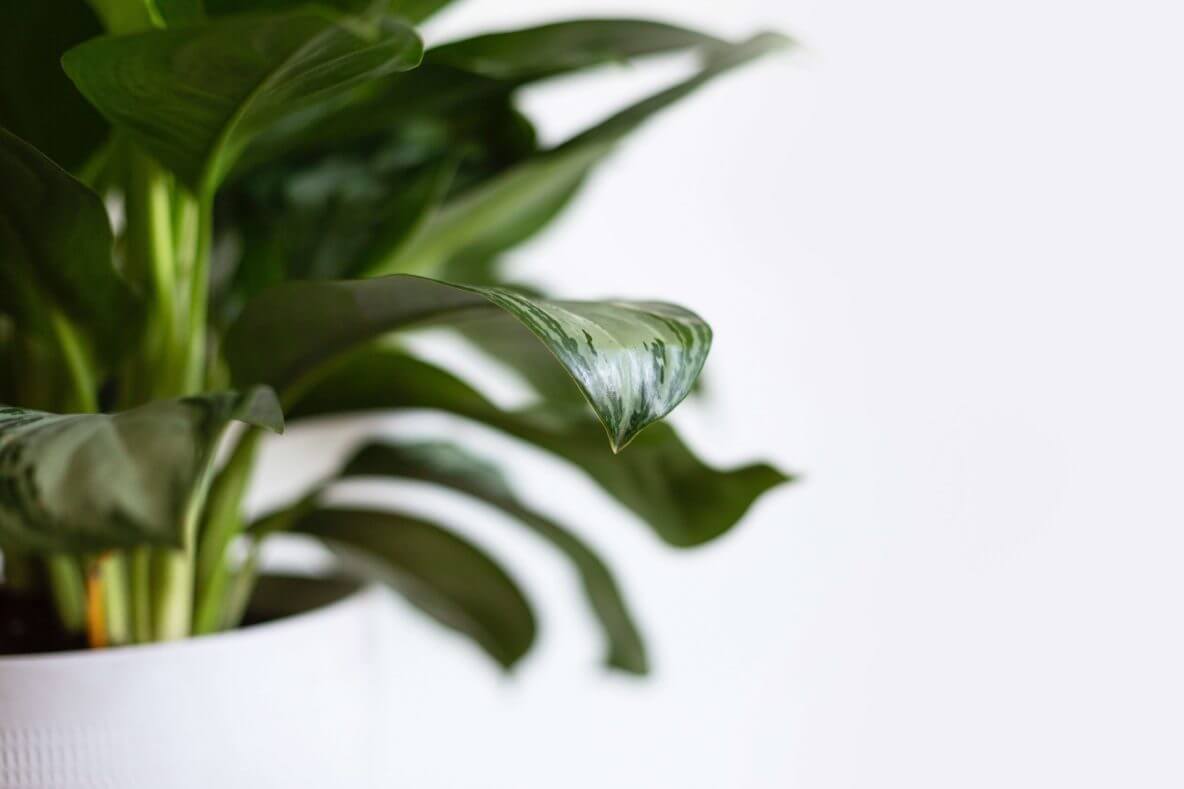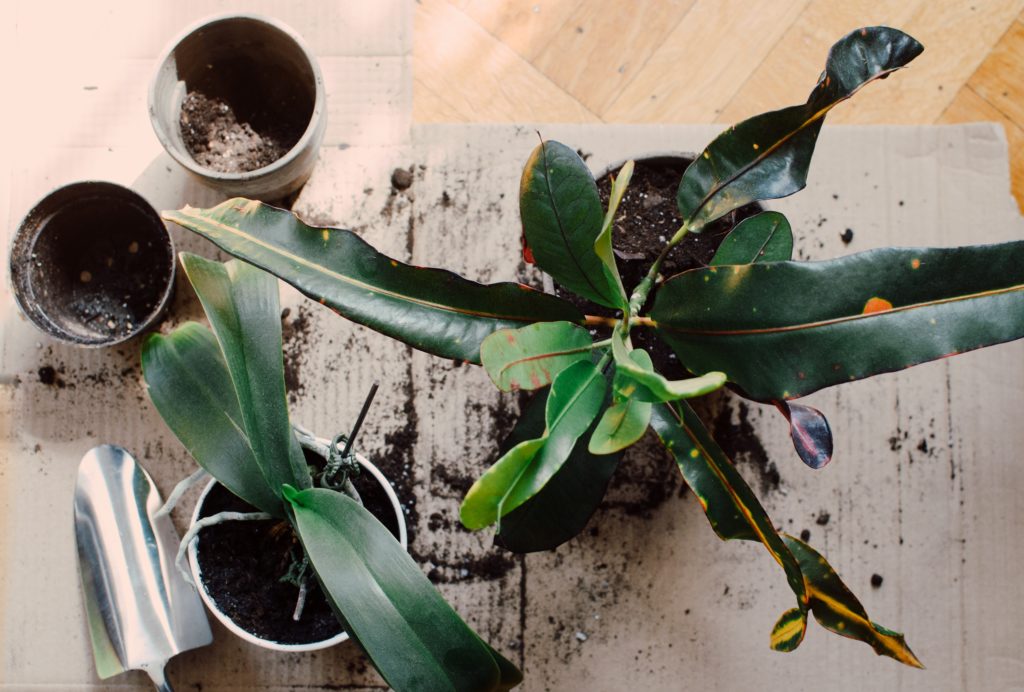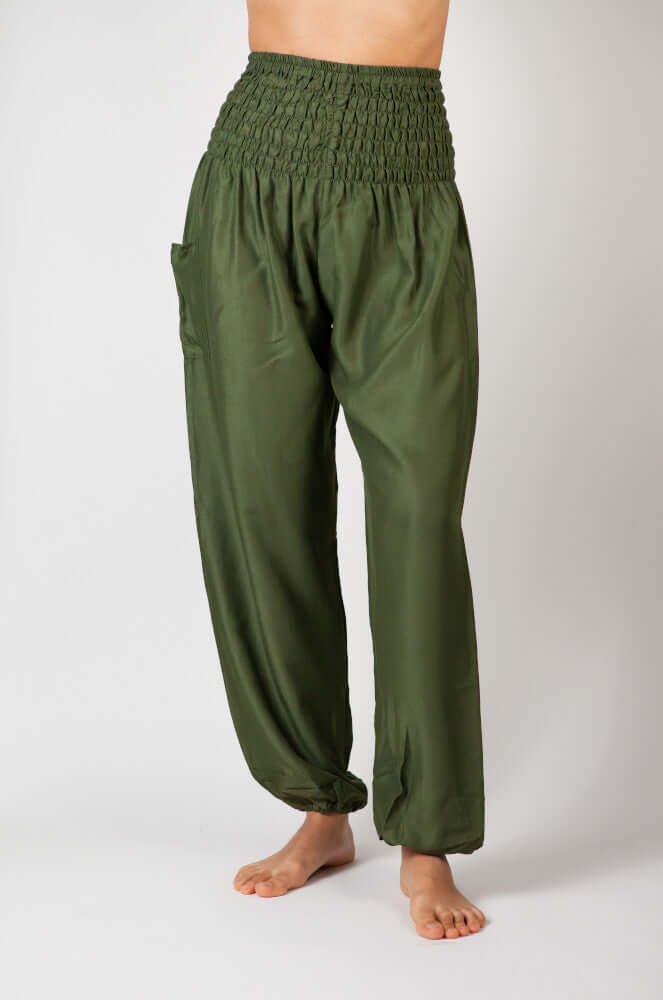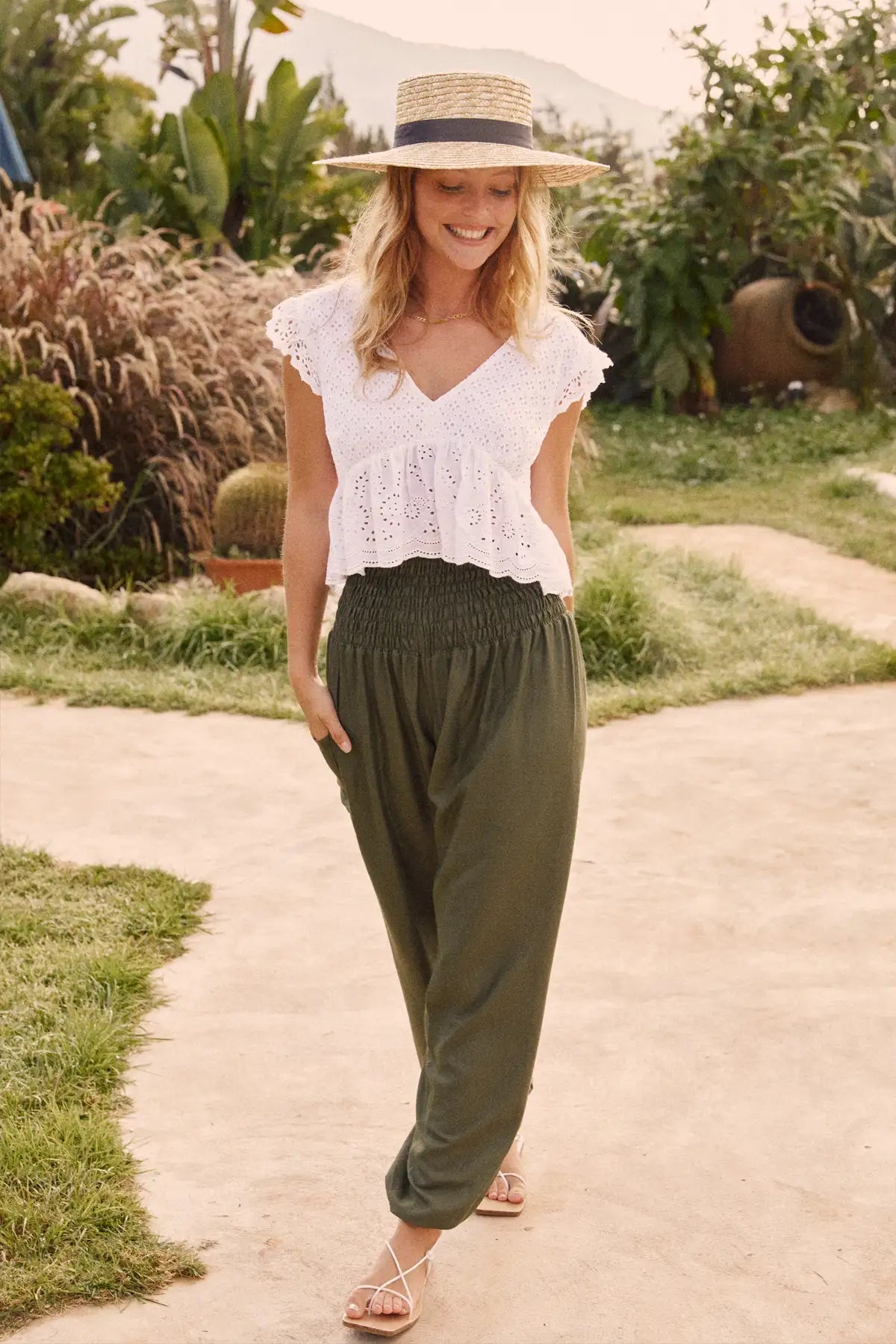
Inhaltsverzeichnis
Zimmerpflanzen pflegen – So klappt’s!
Pflanzen und Blumen machen uns nicht nur glücklich, wenn wir ihnen draußen, in der Natur, begegnen. Auch unseren eigenen vier Wänden verleihen sie Farbe, Gemütlichkeit und Lebhaftigkeit. Wusstest du, dass es uns besser geht, wenn wir Blumen zuhause haben? Mehr dazu kannst du hier nachlesen.
Die eigenen Zimmerpflanzen zu pflegen, ist nicht immer einfach. Es bedarf Beständigkeit und manchmal auch ein wenig Geduld, um die eigenen Zimmerpflanzen gedeihen zu sehen. Kann man jedoch geradezu zusehen, wie die eigenen Pflanzen nach und nach immer mehr eingehen, ist man schnell frustriert und hat das Gefühl, als hätte man alles falsch gemacht.
Daher möchte ich hiermit nützliche Tipps zusammentragen, die einige meiner Pflanzen (und mich) in der Vergangenheit bereits gerettet haben und mit denen die Pflege der Zimmerpflanzen fast schon ein Kinderspiel ist. Wenn ich das hinbekomme, schaffst du es ganz sicher auch – denn ich habe nun wirklich keinen “grünen Daumen”, wie man so schön sagt.
Jeder hat seine eigene Art, mit Dingen umzugehen, und das gilt natürlich auch für Zimmerpflanzen. Wenn du also selbst Tipps oder Anregungen hast, dann teile sie doch gerne mit uns in den Kommentaren unter diesem Post!
Die Anschaffung
Bevor man den lokalen Blumenladen oder das nächstgelegene Gartencenter aufsucht ist es wichtig, sich darüber Gedanken zu machen, wo genau in der Wohnung oder im Büro man die Pflanze(n) später platzieren möchte. Gibt es dort viel Sonne oder ist es eher schattig? Wie steht es um die Temperatur? Wenn man diese Dinge im Voraus weiß, gestaltet sich die Suche nach einer geeigneten Pflanze schnell viel leichter: Im Laden kann man einfach das Etikett der Pflanze mit den Gegebenheiten zuhause abgleichen. So sieht man schnell, ob die Grundvoraussetzungen überhaupt gegeben sind, oder nicht.
Doch nicht nur das Etikett der Pflanze sollte man berücksichtigen. Wenn man in der Gärtnerei ist, gibt es noch ein paar andere Dinge, die man dort beachten kann:
Hast du eine schöne und passende Pflanze gefunden, die du gerne mit nach Hause nehmen möchtest, bietet es sich an, die Pflanze einmal (sanft) aus ihrem Topf zu heben. So bekommst du einen Eindruck der Wurzeln der Pflanze. Sieht man bei bloßem Betrachten bereits viele Wurzeln an der Außenseite ist es sinnvoll, einen größeren Topf zu kaufen, in den man die Pflanze dann überführen kann. So hat sie mehr Platz zu atmen und sich auszubreiten. Auch passende Töpfe zu finden gehört zum richtigen Pflegen deiner Zimmerpflanzen dazu!
Die schlichten schwarzen Innentöpfe der Pflanzen, wie man sie in der Gärtnerei findet, sind meist nicht sehr dekorativ. Es lohnt sich, noch vor Ort nach einem schöneren Übertopf oder Korb zu schauen. So kann man sicherstellen, dass die Pflanze optisch und von der Größe her in den Übertopf passt.

Der Wasserabfluss
Wirklich wichtig bei dem Pflegen von Zimmerpflanzen ist, dass das Wasser gut abfließen kann. Deswegen sollte der Topf der Pflanze am Boden Löcher haben. Fast alle Kunststofftöpfe sind mit Löchern direkt am untersten Rand (also wortwörtlich mit Löchern am Boden) ausgestattet. Es gibt jedoch auch einige wenige, die zwar Löcher in der Mitte des Topfbodes haben, aber sich drumherum nochmal eine Vertiefung befindet, in der sich kreisförmig Wasser ansammeln kann. Angesammeltes Wasser kann dazu führen, dass die Wurzeln faulen und die Pflanze so schließlich stirbt. Daher wollen wir Erstere, das heißt Töpfe, deren Löcher sich wirklich am untersten Rand des Behälters befinden.
Das Umtopfen
Wie bereits oben beschrieben kann man Pflanzen umtopfen. Das macht vor allem Sinn, wenn die Pflanze aus ihrem Topf herauswächst: Die Wurzeln sind beim Herausheben der Pflanze aus dem Topf bereits überall sichtbar. Das ist ein Zeichen dafür, dass die Pflanze mehr Platz braucht, um gesund weiterwachsen zu können.
Einige Pflanzen vertragen einen Wechsel ihrer Umgebung jedoch nicht immer gut. Um sicher zu gehen, kannst du die folgende Technik anwenden. Damit machst du es den Pflanzen leichter und das Umtopfen gelingt so in so gut wie allen Fällen problemlos.
Die “Technik” besteht eigentlich nur aus einem einzigen Schritt: Benetze die Erde mit Wasser, bevor du sie in den neuen Topf gibst. Die Erde sollte so feucht sein, dass sie zusammenklebt (aber bitte nicht platschnass). Das war’s schon!
Die feuchte Umgebung regt die Wurzeln der Pflanze dazu an, sich auszubreiten und die neue Umwelt zu explorieren. Die Pflanze fühlt sich also schneller in ihrer neuen Umgebung wohl.
Der neue Topf wird dann wie gewöhnlich an Boden und Wänden mit der befeuchteten Erde ausgekleidet. Anschließend wird die Pflanze eingesetzt und mit ein wenig mehr nasser Erde bedeckt. Zum Schluss die Pflanze nochmal gießen, damit auch die alte (ursprüngliche) Erde Feuchtigkeit abbekommt!

Das richtige Gießen
Zum Pflegen von Zimmerpflanzen gehört natürlich auch das Gießen. In einer Über- oder Unterwässerung der Pflanzen liegt wohl der häufigste Grund für deren Eingehen. Das kommt daher, dass unsere Zimmerpflanzen nicht alle denselben Bedarf an Wasser haben. Diese Faustregeln schaffen Abhilfe:
-
In welchen Abständen sollte ich gießen?
Die Erde sollte nicht durchgehend feucht sein, sondern zwischen den Bewässerungen recht trocken werden. Stecke deinen Finger ein paar Zentimeter in die Erde. Wenn die Erde an deinen Fingerspitzen noch feucht ist, dann brauchst du nicht zu gießen. Ist sie dagegen trocken, ist es Zeit für die nächste Bewässerung. -
Wieviel sollte ich gießen?
Den meisten Pflanzen gefallen “nasse Füße” nicht. Daher sollte sich beim Gießen kein ganzer Teich auf dem Unterteller bilden. Gieße so lange, bis sich ein kleines bisschen Wasser auf dem Unterteller sammelt. Falls es doch mal zu einer kleinen “Überschwemmung” kommen sollte, kann man das Wasser auf dem Unterteller immer noch abgießen. -
Und sonst so?
Ganz intuitiv brauchen Zimmerpflanzen besonders in den Frühlings- und Sommermonaten regelmäßiger Wasser als in den kälteren Monaten. Doch wenn es draußen heiß wird verlangen Pflanzen nicht nur mehr Wasser – sie mögen es auch, wenn das Wasser ein bisschen kälter ist als im Winter. Im Winter sollte das Wasser hingegen nicht warm, sondern auf Zimmertemperatur sein.
Die Ernährung
Wir wissen, das Pflanzen Licht, Erde und Wasser brauchen, um sich wohl zu fühlen. Was man manchmal jedoch vergisst, ist, dass Pflanzen auch Düngemittel brauchen. Dünger ist wie Essen für die Pflanzen. Auch hier gilt natürlich, dass jede Pflanze anders ist. Aber im Schnitt sollte man seine Zimmerpflanzen im Frühling und Sommer alle 2-4 Wochen “füttern”. Im Winter hingegen brauchen die Pflanzen Ruhe und müssen daher in dieser Zeit meist gar nicht gedüngt werden.
Das Licht
Einige Pflanzen brauchen Licht, andere hingegen brauchen eher Schatten. Unabhängig davon benötigen alle Pflanzen aber eine natürliche Lichtquelle. Während der kalten Wintertage sollte man seine Pflanzen unter Umständen mehr in Richtung einer Lichtquelle bewegen. Trotzdem sollte man damit auch eher vorsichtig sein – denn viele Pflanzen mögen es nicht, ihren Platz zu wechseln. Sie gewöhnen sich an ihre Umgebung. Bewege deine Pflanzen also nur, wenn es wirklich nötig ist.
Die Temperatur
Ein anderer Punkt, auf den man beim Pflegen der Zimmerpflanzen achten sollte, ist die Umgebungstemperatur der Pflanze. Wie auch wir Menschen bevorzugen Pflanzen Temperaturen innerhalb eines Bereiches, der für sie angenehm ist.
Denke daran, dass Pflanzen, die vor einem Fenster stehen oftmals sehr verschiedenen Temperaturen ausgesetzt sind. Dasselbe gilt für Pflanzen in der Nähe einer Heizung oder einer Klimaanlage.
Die Pflege
Insekten und Käfer lieben totes und verfallenes Laub. Daher solltest du heruntergefallene Blätter, die nun auf der Erde liegen, beseitigen. Auch wenn man sieht, dass einzelne Blätter oder Stängel wohl bald absterben werden, sollte man diese abschneiden. So können sie den noch gesunden Blättern keine wertvollen Nährstoffe wegnehmen und der Pflanze geht es insgesamt besser.
Insekten und unerwünschte Tierchen
Wenn man gerade dabei ist seine Pflanzen zu wässern, sollte man sich regelmäßig einen Augenblick Zeit nehmen, um die Blätter/ den Stamm der Pflanze nach kleinen Insekten abzusuchen. Trifft man auf solche, ist es am besten, sich sofort darum zu kümmern (wie bei so vielem im Leben ). Wenn man einen Verdacht hat aber nicht genau weiß, mit was für einem Insekt die Pflanze befallen ist, kann man natürlich entweder googlen – oder sich bei einer Gärtnerei erkundigen. Viele der kleinen Schädlinge lassen sich bereits mit einer leichten Seifenlauge entfernen. Dazu einfach die Blätter mit dem Seifenwasser einsprühen und anschließend mit einem feuchten Tuch abwischen. Es kann sein, dass man diesen Vorgang ein paar Mal wiederholen muss. Bei Blattläusen beispielsweise ist die Pflanze jedoch meist schon nach der ersten Anwendung vom Befall befreit.
Falls du mit neuen Pflanzen experimentierst, dich ein wenig ausprobierst und es schiefgeht, dann lass dich nicht entmutigen. Manche Zimmerpflanzen sind nicht einfach zu pflegen, und manche werden sterben – das ist der Zyklus des Lebens. Und trotzdem wirst du mit jedem Mal besser werden und dazulernen!
Eine Option, die man natürlich auch hat ist, die Art der Pflanze an sein eigenes Fähigkeitsniveau anzupassen. Sukkulenten und Efeututen zum Beispiel benötigen keine aufwändige Pflege, da sie weniger eigen und pingelig sind als so manch andere Zimmerpflanzen…
Wenn du noch mehr über die Themen Nachhaltigkeit, Achtsamkeit oder gesunde Ernährung erfahren möchtest, schaue doch mal hier vorbei.


























Leave a comment
This site is protected by hCaptcha and the hCaptcha Privacy Policy and Terms of Service apply.